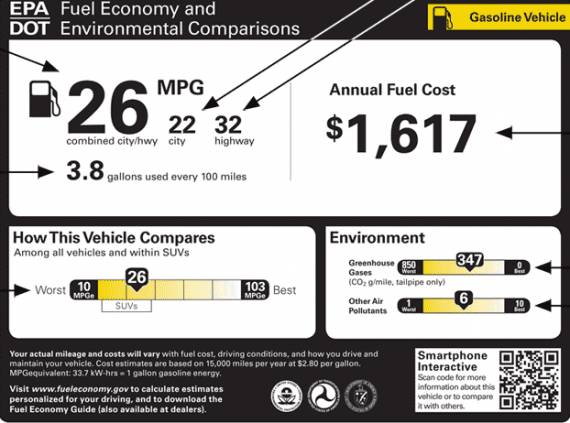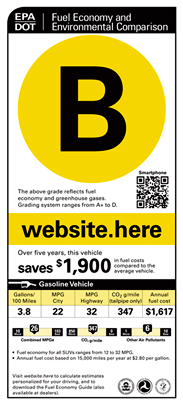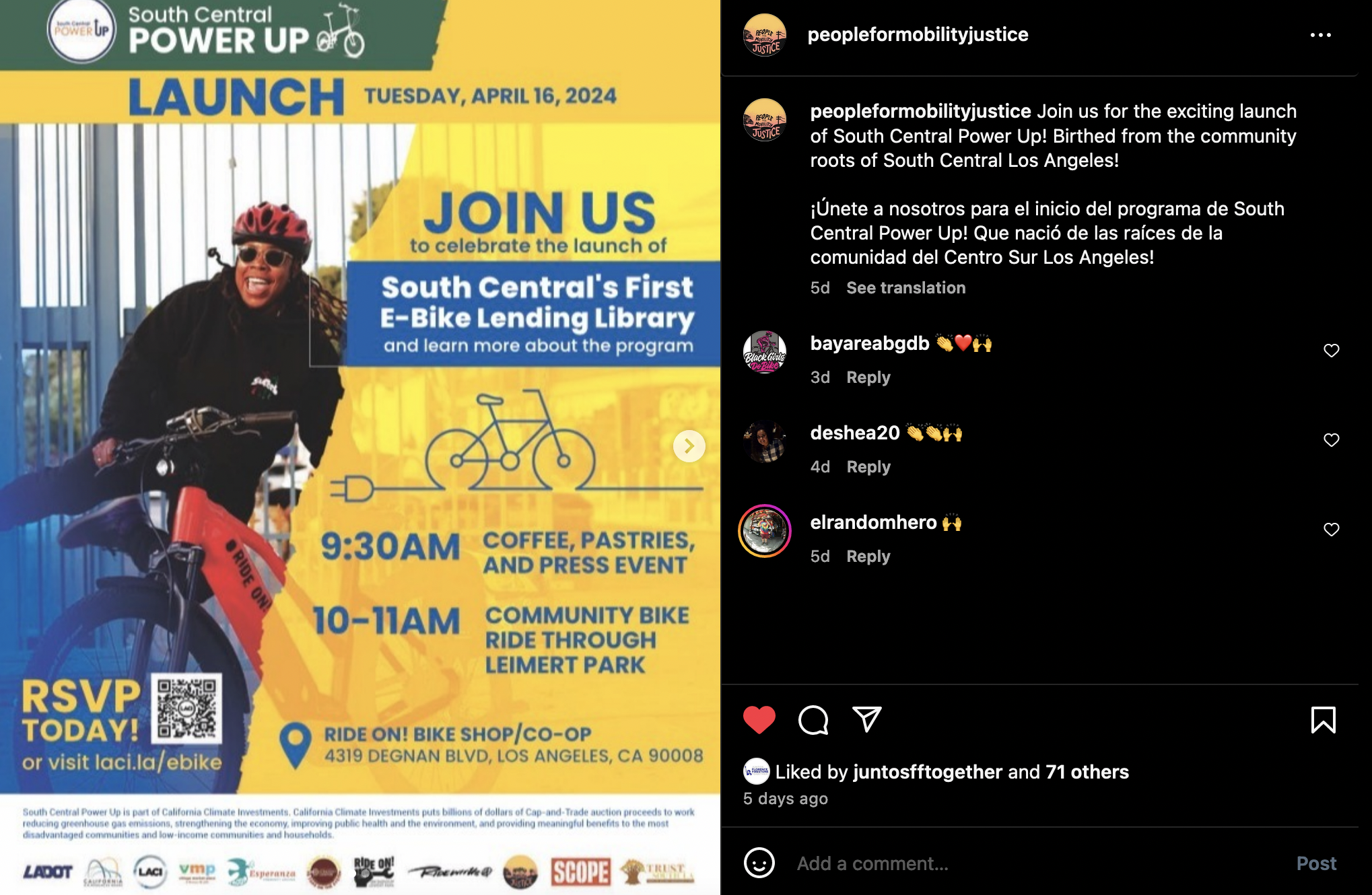EPA/USDOT Wants Our Input on Fuel Economy Stickers for New Cars
8:30 AM PDT on October 19, 2010

This Thursday, the United States Environmental Protection Agency (EPA) is coming to town to hold a public hearing on the design of new fuel economy stickers that will be placed on "for sale" cars. The agency, in partnership with the USDOT, will select either the sticker type pictured above, or a more simple "letter grade" sticker that would have an "A, B, C, or D" letter grade and a brief explanation of the grade. The new sticker will be the first change in environmental information given to consumers in three decades. The hope is that by informing car buyers of the environmental consequences of their vehicle choice that they'll make better choices.
The hearing details can be found at the end of the article. If you wish to testify in person, you have to email lucie.audette@epa.gov ahead of time. If you'd rather testify online, you can do so by clicking here.
At an earlier hearing on the new stickers held in Chicago, two familiar factions each backed a different sticker. Environmentalists favor the "letter grade" sticker because its easy to understand. The automobile industry prefers the more detailed yet confusing one pictured above. Environmentalists seem thrilled that the government is considering an easy way to warn drivers away from the worst polluting vehicles. Meanwhile, car dealers are worried. After all, these stickers could end up being the "Surgeon General's Warning" for cars.

Locally, the Sierra Club is urging people to come out and support the letter-grade stickers. In a letter to supporters, the Sierra Club breaks down their position in what they hope to see in the final design for the stickers:
- A prominent letter grade system, based on one scale for all vehicles – This simple system is easy to understand and compares all vehicles on the same scale.
- Comparison of greenhouse gas emissions from vehicles. Such a comparison showsenvironmental impact while still being applicable to all technologies. While electric vehicles do not emit any pollution through a tailpipe, emissions are generated to create the electricity that powers them. These “upstream” emissions should be shown on the window label.
- Clear communication of economic costs and savings associated with driving the new vehicle.
On the other side of the issue, car buyers website Edmunds.com quotes a car salesman speaking at the Chicago hearing arguing that the speakers will speak to an audience that is ambivalent :
But Desmond Roberts, a Chicago area Chevrolet dealer who spoke as a representative of dealer organizations, argued that comparing all models by the same yardstick is "at best virtually of no value and at worst counterproductive" because it ignores buyer's size, space and budget needs.
"They're making decisions based on their family needs. Once they meet those needs, they look at other considerations," Roberts said.
"The overwhelming majority of prospective vehicle purchasers focus on fuel economy only when fuel prices are relatively high and only as a relatively minor criterion when compared to other vehicle attributes," he said, adding that even fewer buyers consider greenhouse gas emissions when shopping.
Of course, it's quite a bit more difficult to ignore the environmental impact of one's vehicle choices when a sticker on the car is warning you before the car is purchased that it's a gas-guzzling rolling environmental disaster.
However, for many the issue isn't that cut and dry. Consumer Reports goes in to more detail on the debate, noting that requiring a measurement "milers per gallon" to be on cars is an out-dated way to look at how environmentally friendly a automobile is:
Both labeling strategies shift from measuring fuel economy in terms of miles per gallon to energy consumption. We think distance traveled per unit of energy consumed, provides a better comparison between vehicles. (Read "Not all mpg's are created equal.")
The new stickers are designed to preclude the confusion that led General Motors to announce the extended-range Volt's fuel economy as 230-mpg last year. The company used a calculation that didn't count the electricity the car consumed and used a composite average driver who hardly ever filled up with gasoline. Nissan quickly countered with a claim of 327 mpg for the Leaf, which in fact uses no gasoline at all. At best, these claims are confusing, at worst, misleading. (Read: “2011 Chevrolet Volt highlights from Consumer Reports track”)
The basic problem, of course, is that electricity doesn't come in gallons, which makes "mpg" a meaningless measurement for cars that run on electricity.
A poll at the bottom of the Consumer Reports article showed a divided readership on whether or not the EPA/USDOT stickers should carry a letter grade. At press time, "without letters" was leading 52%-48%.
Hearing information:
On Oct 21st the U.S. EPA is coming to Los Angeles to take public comment on proposed new labels for passenger vehicles sold in the United States. These labels would highlight fuel economy savings and give letter grades to cars, something that will help promote the sale of cleaner cars in our nation, and in California. For more information please visit: http://www.epa.gov/otaq/cert/mpg/.
What: EPA and NHTSA Revisions and Additions to Motor Vehicle Fuel Economy Label Public Hearing
When: Thursday, October 21, 2010, 12-4 PM and 6-10 PM. Please try and let me know you preferred time.
Where: Sheraton Los Angeles Downtown Hotel, 711 South Hope Street, Los Angeles, California 90017
213-488-3500
Stay in touch
Sign up for our free newsletter
More from Streetsblog Los Angeles
Metro Looks to Approve Torrance C Line Extension Alignment
Selecting the relatively low-cost hybrid alternative should help the oft-delayed South Bay C Line extension move a step closer to reality
This Week In Livable Streets
CicLAvia returns to Venice Boulevard, Metro board committees, L.A. City Council Transportation Committee, Metro budget theater, and more




